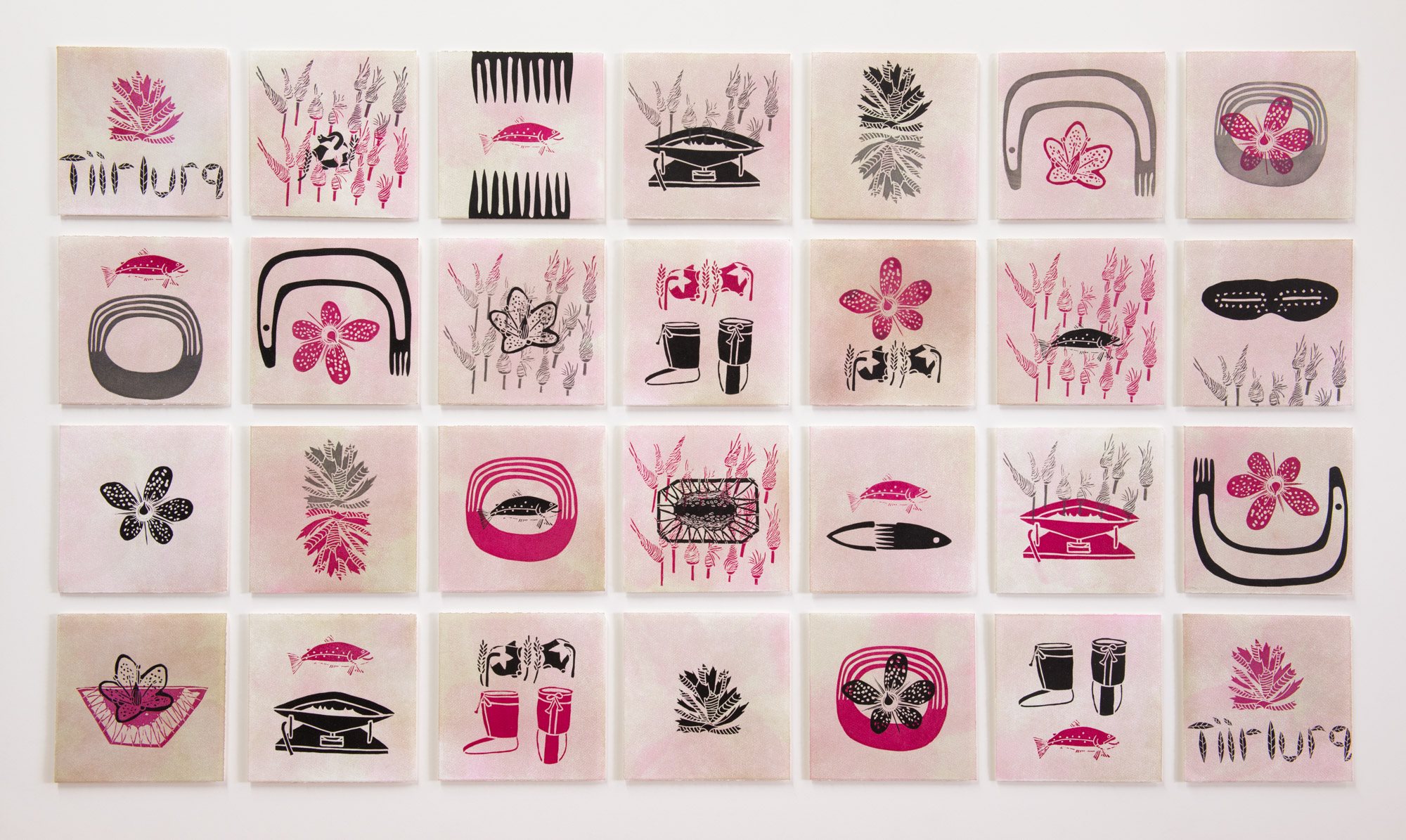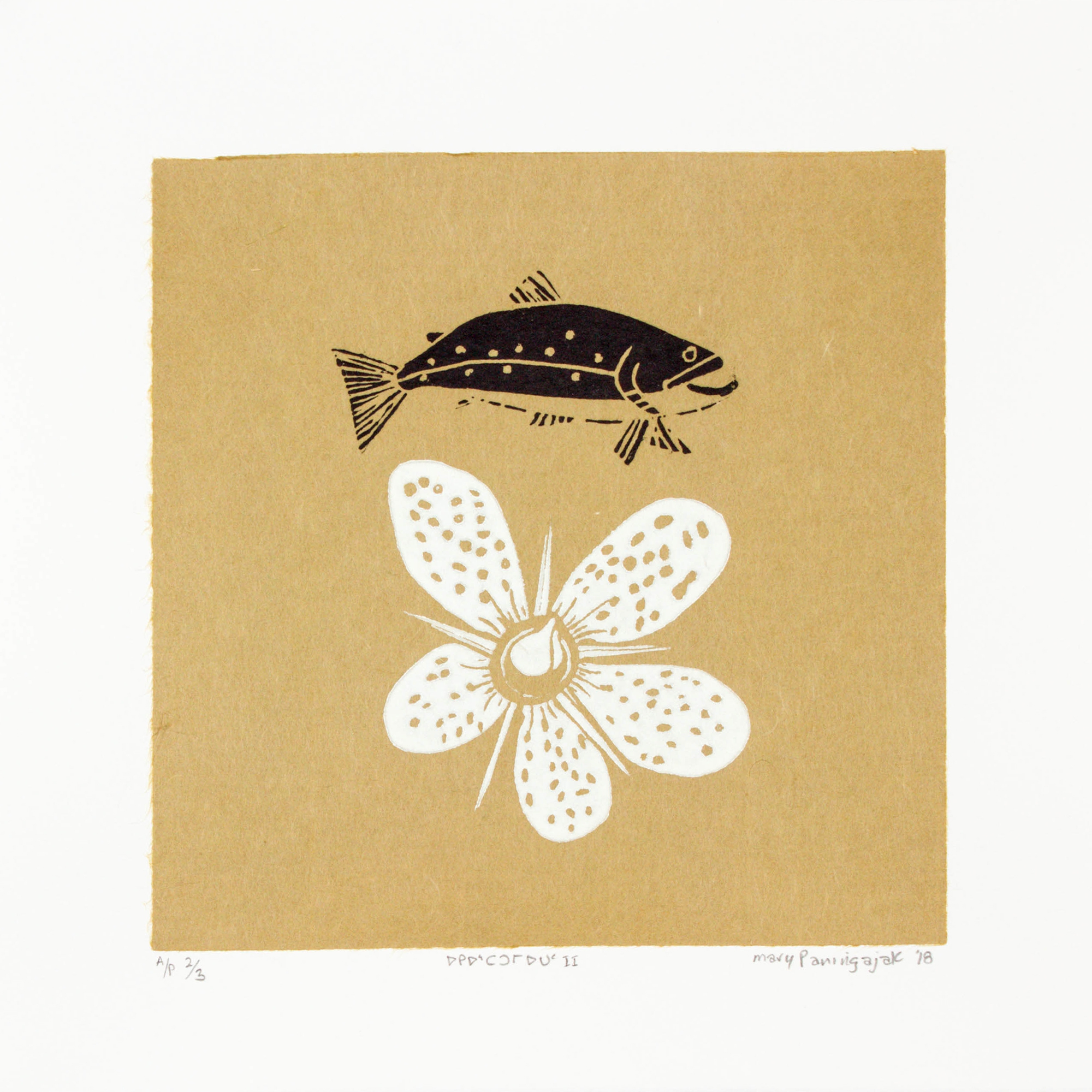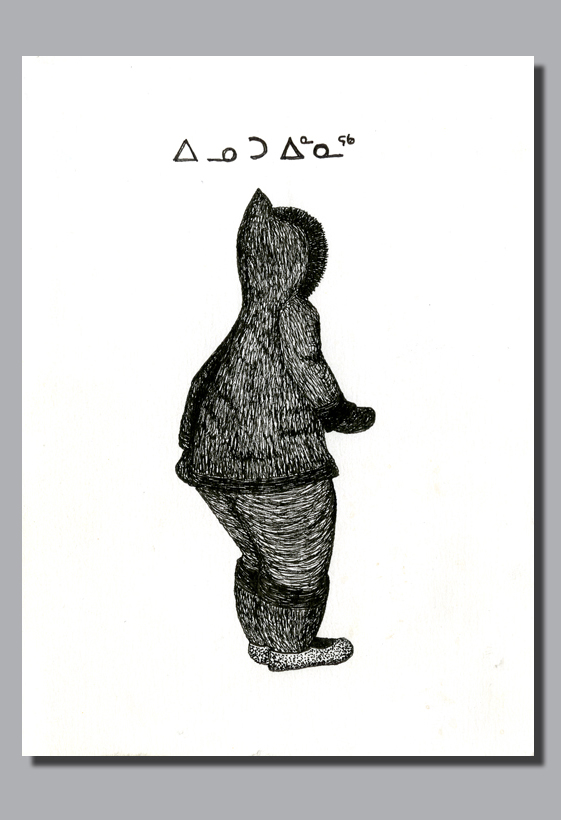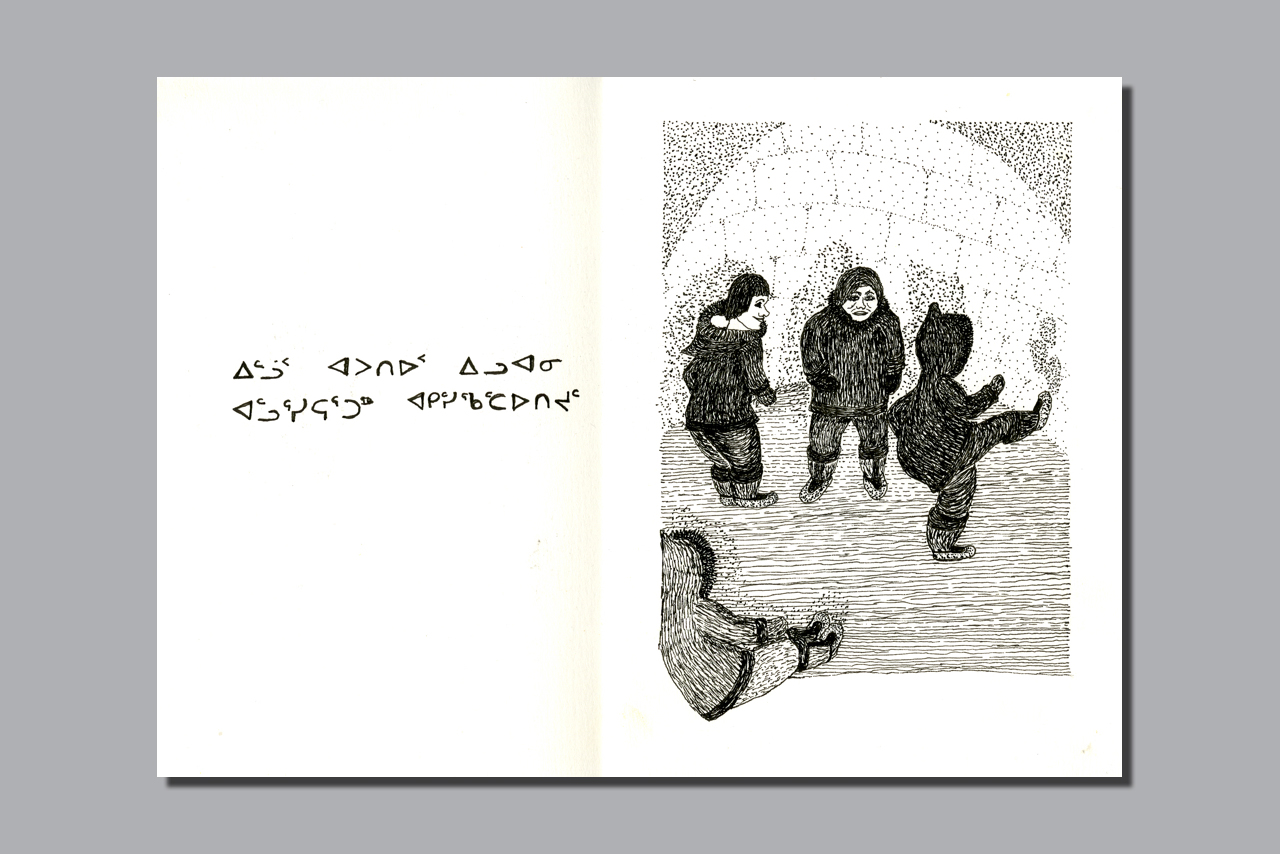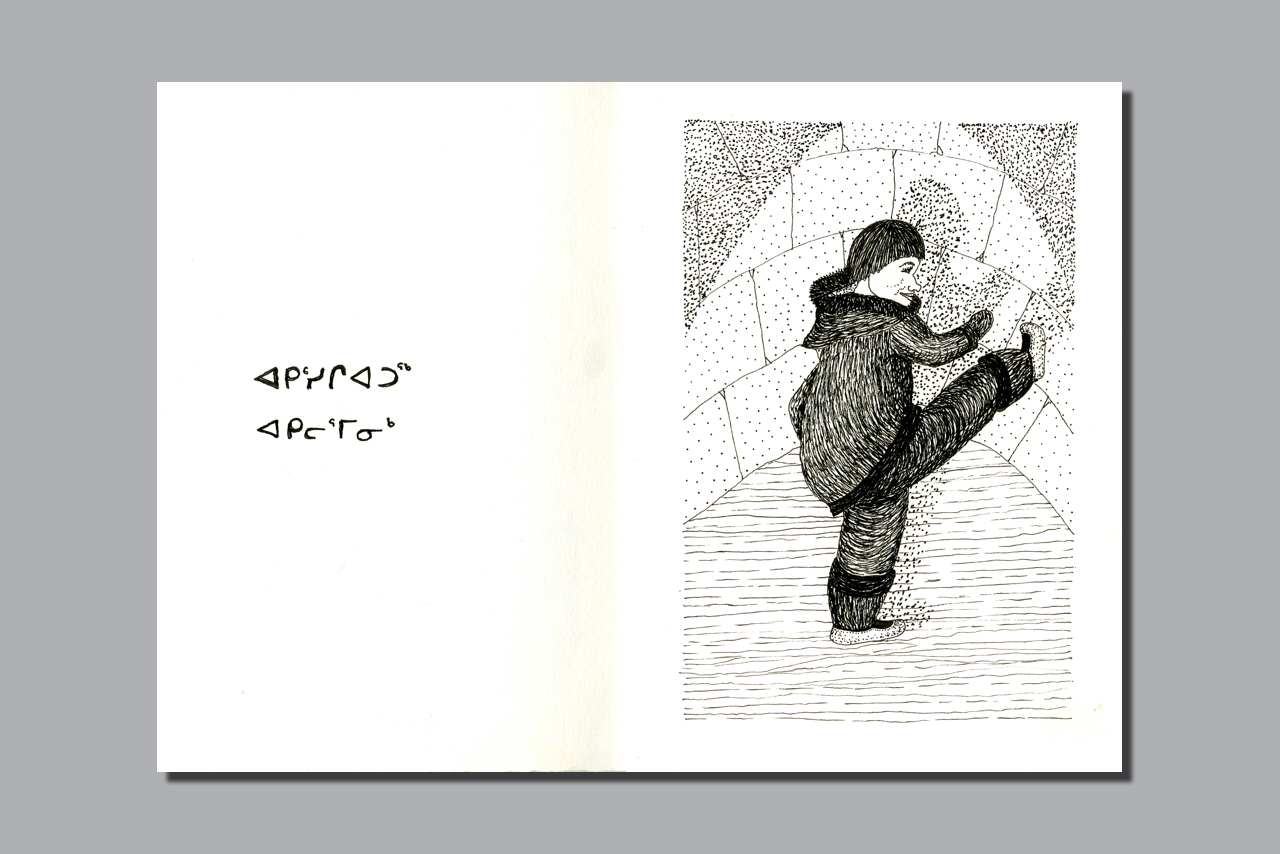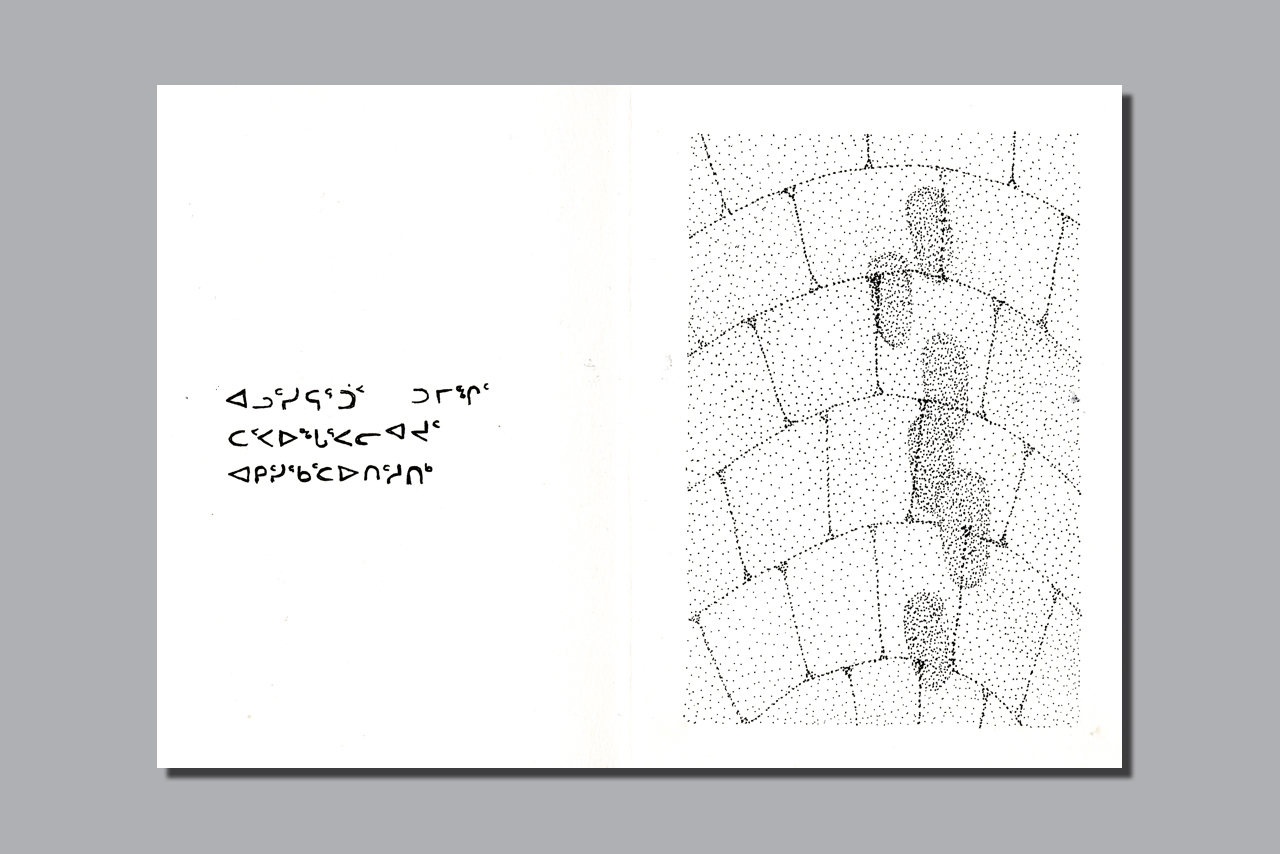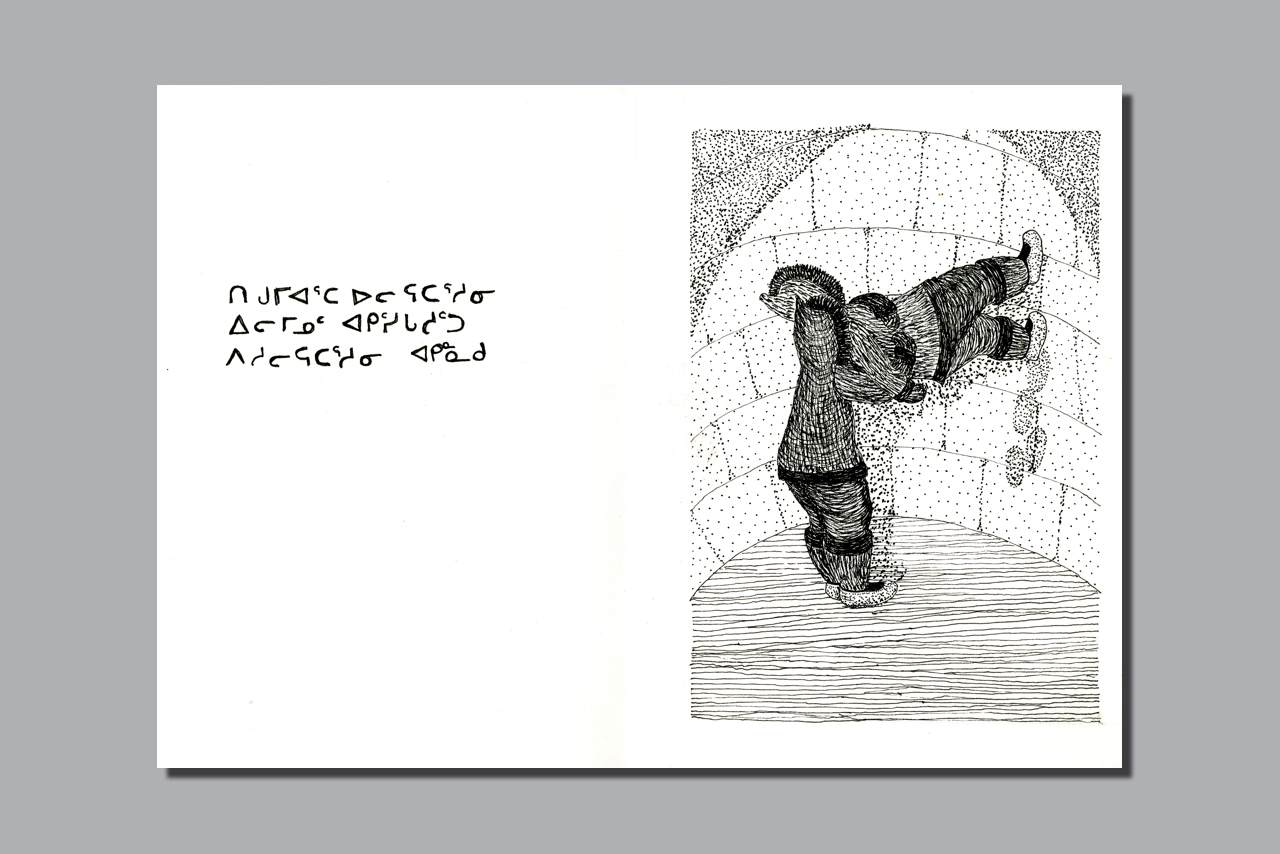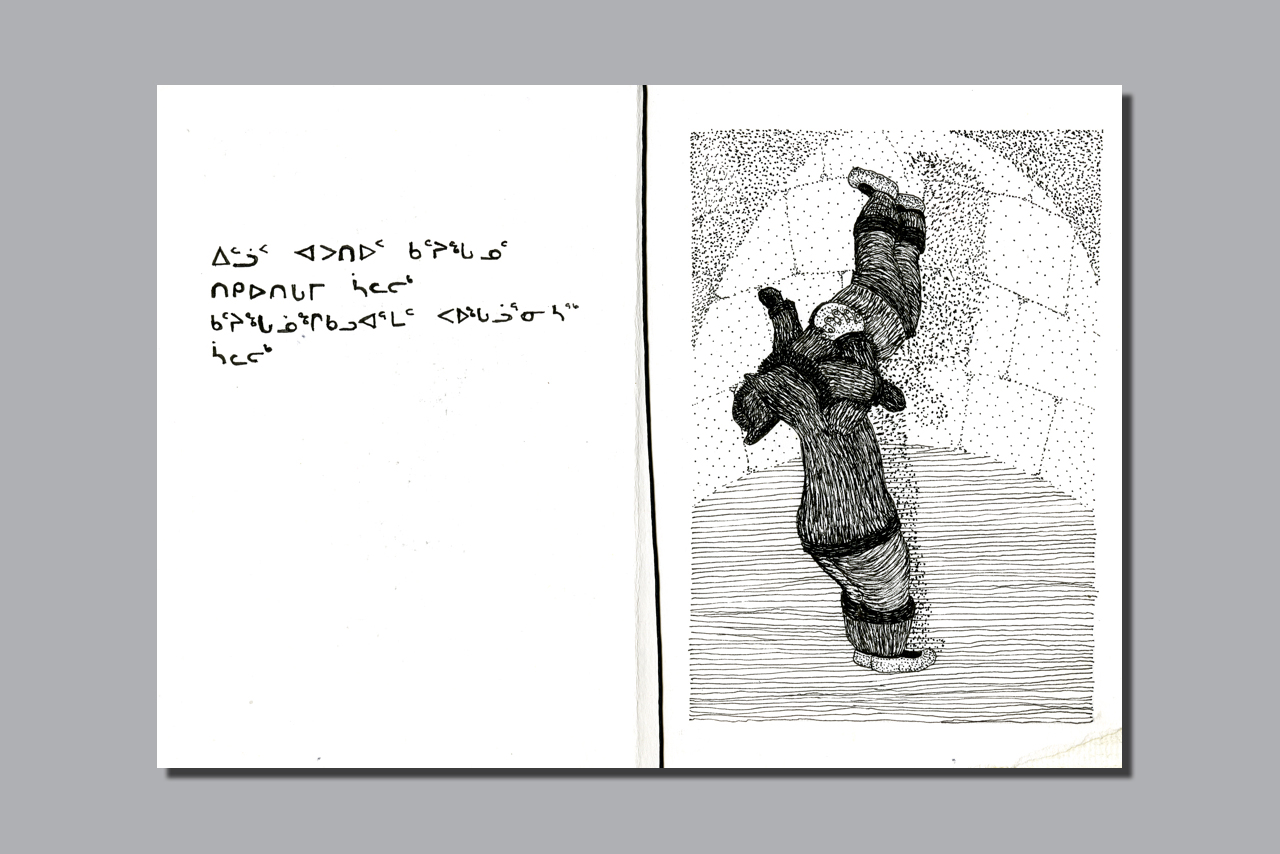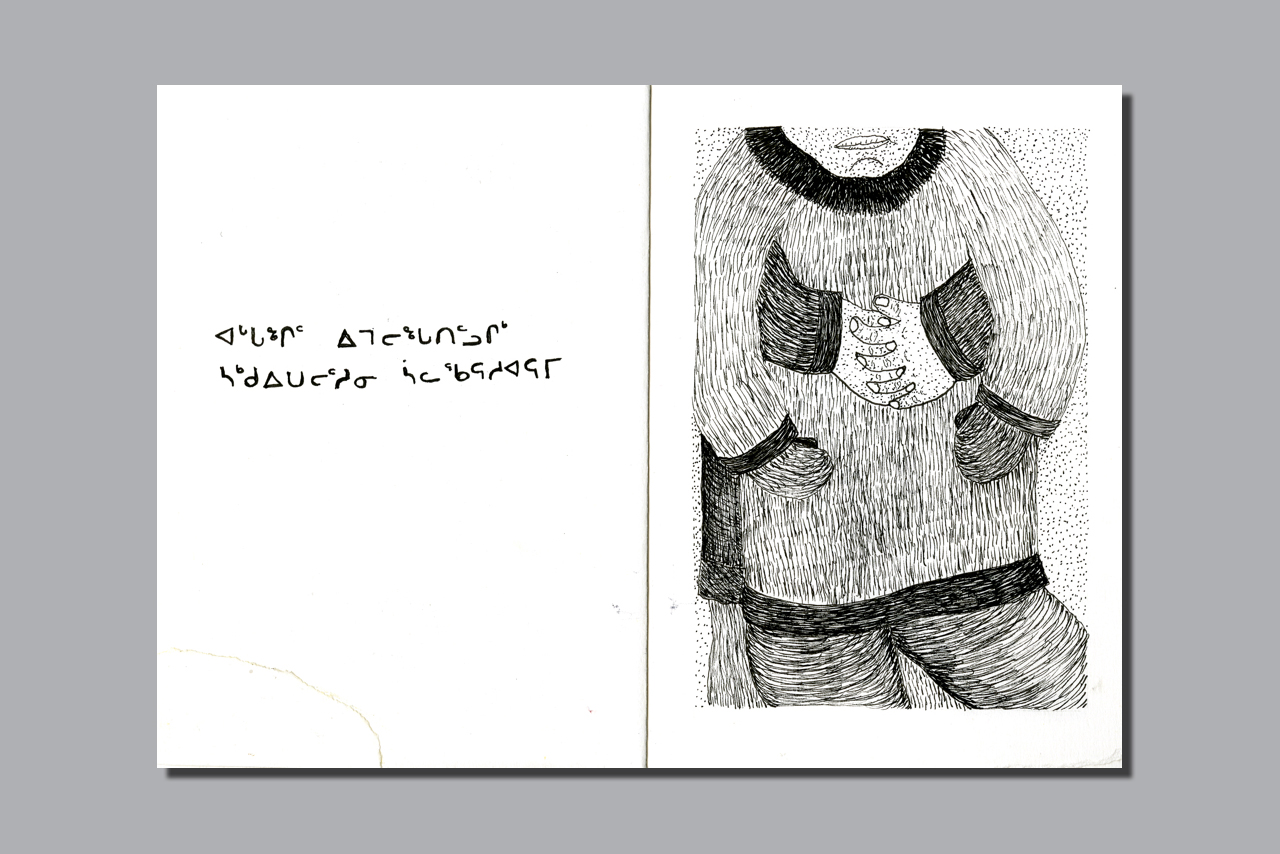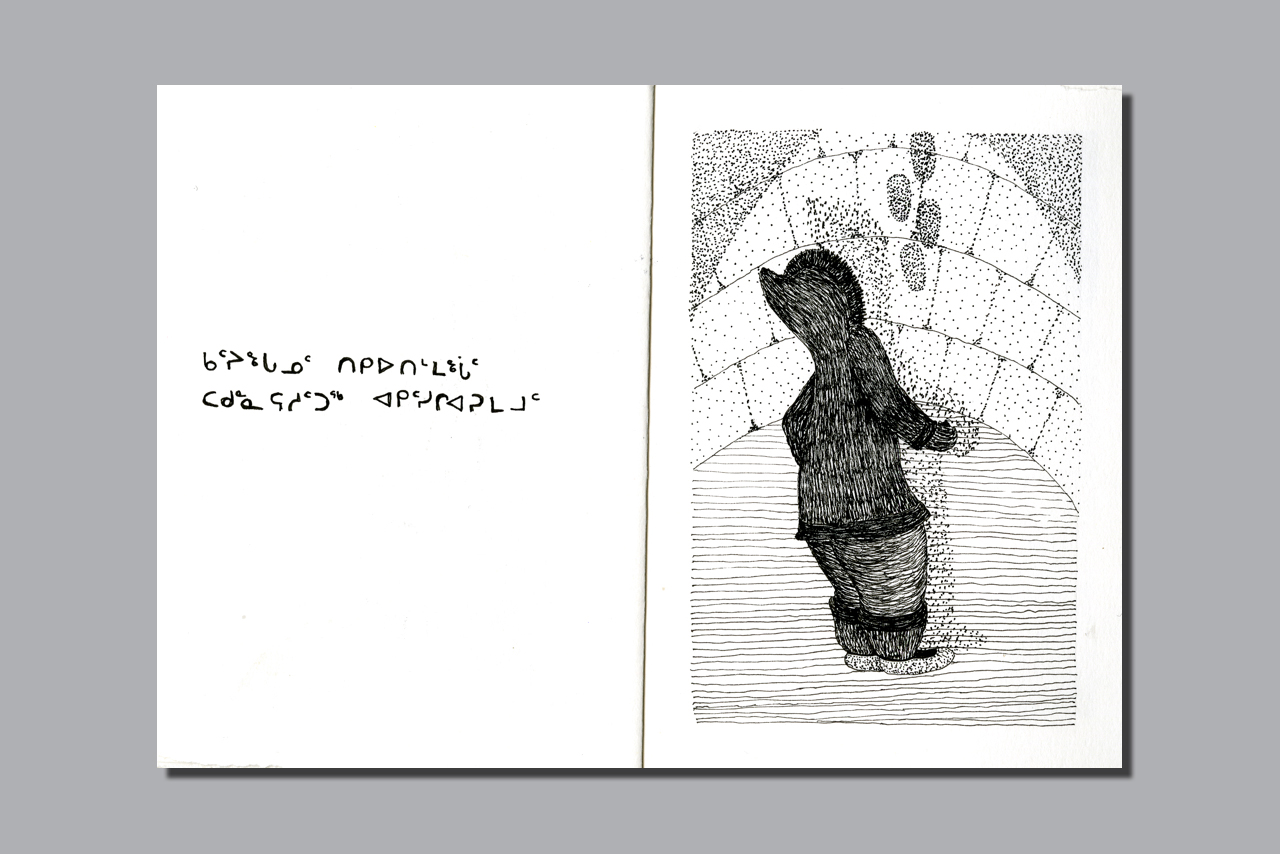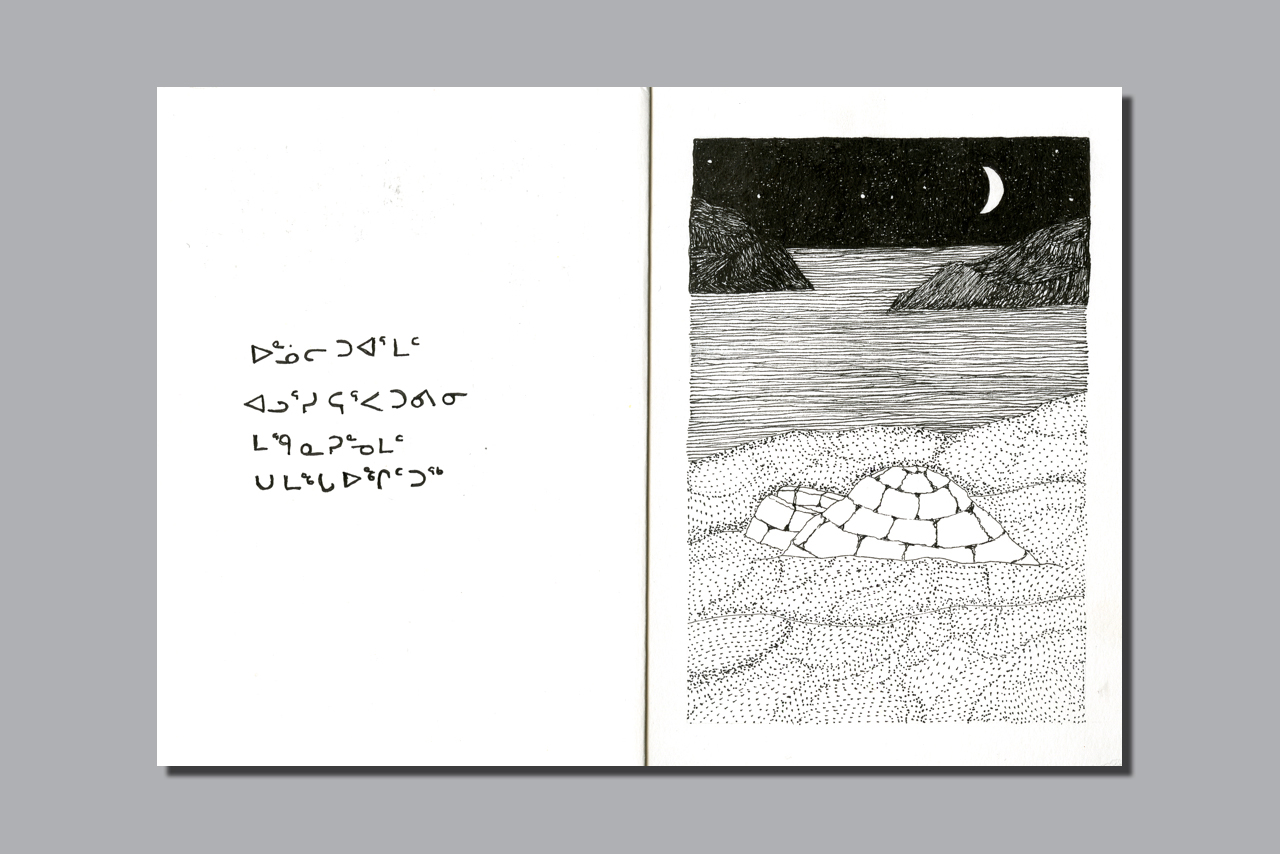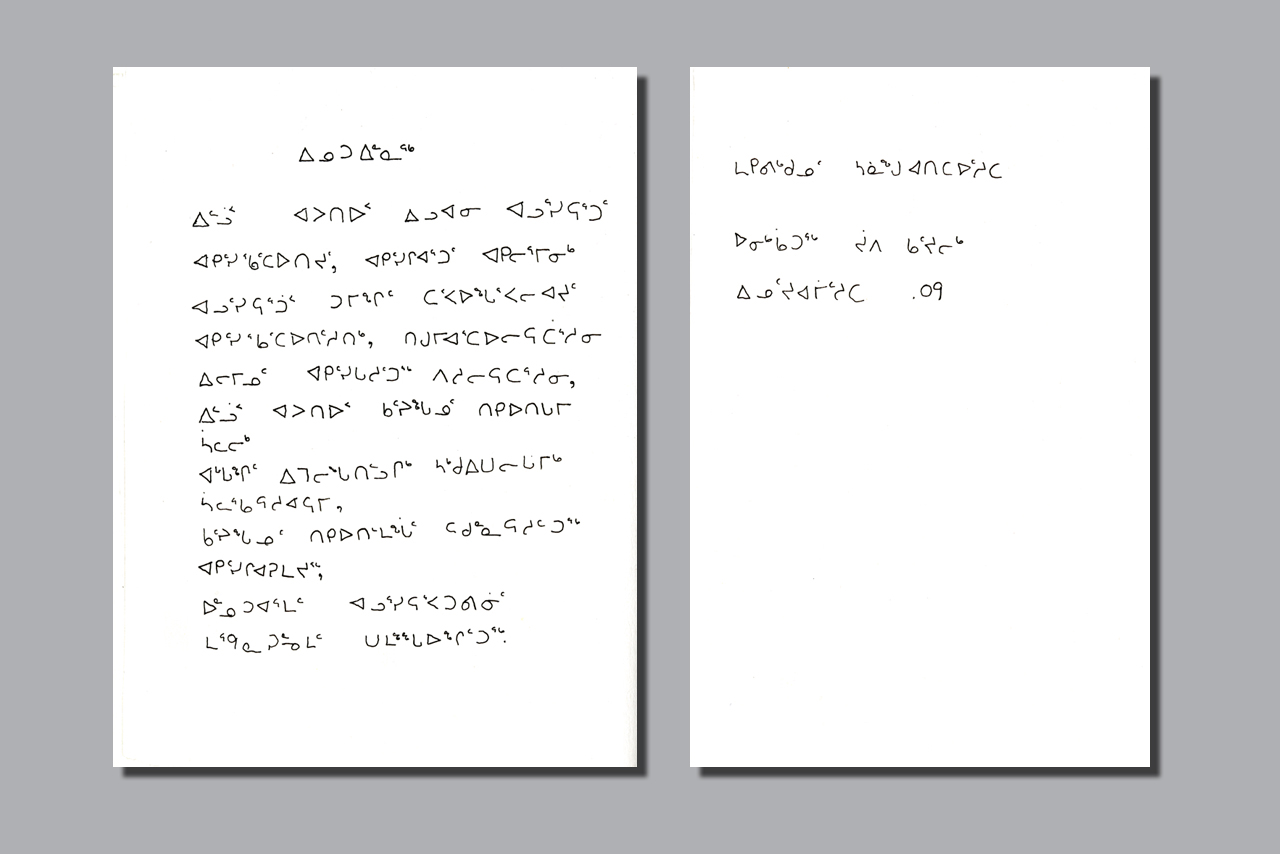ᒥᐊᔨ ᐸᓂᖓᔭᒃ Mary Paningajak
ᒥᐊᔨ ᑕᑯᒥᓇᕐᑐᓕᐅᕐᑎ ᐱᕈᕐᓴᑕᐅᓯᒪᑦᓱᓂ ᐊᑖᑕᒥᓄᑦ, ᑏᕕ ᐸᓂᖓᔭᒧᑦ, ᓴᓇᐅᒐᕐᑎᐅᓯᒪᔪᒧᑦ ᐊᒻᒪᓗ ᓴᓇᕐᕈᑎᓕᐅᕐᑎᐅᓱᓂ ᐃᕗᔨᕕᒻᒥ, ᑯᐯᑉ ᖁᓛᓂ. ᑕᑯᒥᓇᕐᑐᓕᐅᕐᑎᐅᓱᓂ ᐊᑖᑕᒥᑎᑐᑦ, ᑕᑯᒥᓇᕐᑐᓕᐅᕐᓱᓂ ᐃᑭᒥᓂᒃ ᒪᒣᓭᓲᖅ. ᐊᓈᓇᖃᑦᔭᒐᓂ ᐱᕈᕐᓴᓯᒪᔪᖅ, ᐊᖓᔪᖓᓗ ᐃᒻᒥᓂᕿᑦᓱᑎᒃ ᐊᓐᓄᕌᓕᐅᕆᐅᕐᑐᕕᓃᒃ ᐃᒻᒥᓂ. ᐊᒥᓱᑦ ᐃᓄᐃᑦ ᑌᒣᓯᒪᒻᒪᑕ, ᒥᐊᔨ ᓴᓇᖕᖑᐊᕈᓐᓇᓯᓯᒪᔪᖅ ᑕᑯᓐᓇᑐᐃᓐᓇᓱᓂ ᑲᒃᑲᓛᒍᑦᓱᓂ ᓴᓇᒋᐅᕐᓴᐸᓐᓂᕋᒥ. ᑲᒃᑲᓛᒍᑦᓱᓂᒎᖅ ᑲᖕᖑᓱᑦᑕᑑᓐᓂᕋᒥ ᐊᓐᓄᕌᒃᑯᕕᒻᒥᑕ ᐃᓗᐊᓃᑦᓱᓂ ᓴᓇᖕᖑᐊᐸᑦᑐᕕᓂᖅ. ᐅᓪᓗᒥ, ᐊᑦᔨᒌᖕᖏᑐᓂᒃ ᒪᑭᕝᕕᑯᑦ ᐊᒻᒪᓗ ᐊᐅᒻᒫᒋᕝᕕᒃ ᑕᑯᒥᓇᕐᑐᓕᐅᕐᓂᓄᑦ ᑲᑎᒪᑎᑦᓯᓕᑐᐊᕐᒪᑕ ᐁᓲᒍᓕᕐᑐᖅ, ᐱᔪᓐᓇᓕᕐᓂᒥᓂᒃ ᑕᑯᑎᑦᓯᒍᓐᓇᐸᓕᕐᑐᖅ ᐊᒻᒪᓗ ᑕᑯᒥᓇᕐᑐᓕᐅᕐᑎᓚᕆᐅᓕᕐᓱᓂ.
ᒥᐊᔨ ᐃᓚᐅᓯᒪᔪᖅ ᑕᑯᒥᓇᕐᑐᓕᐅᕐᑎᓄᑦ ᑲᑎᒪᔪᓄᑦ ᐊᒻᒪᓗ ᓴᓇᖕᖑᐊᑎᓄᑦ ᐃᓕᓐᓂᐊᕆᐊᖃᑕᐅᓯᒪᑦᓱᓂ, ᐱᓗᐊᕐᑐᒥᒃ ᐅᓂᒃᑳᖑᐊᓕᐅᕐᑐᓂᒃ ᐊᓪᓚᖑᐊᕐᓱᒋᓪᓗ ᐅᓂᒃᑳᓕᐅᕐᓱᓂ ᓄᓇᕕᒻᒥ ᑐᓵᔭᐅᓲᓂᒃ. ᐊᑐᐊᕐᓯᖃᑦᑕᓱᓂ ᐊᒻᒪᓗ ᐊᓪᓚᖃᑦᑕᓱᓂ “ᖃᓂᐅᔮᑉᐯᑎᑐᑦ” (ᐃᓄᐃᑦ ᐊᓪᓚᒍᓯᖓ) ᐅᓂᒃᑳᓕᐅᕐᓱᓂ ᐃᑲᔪᕐᓯᔭᐅᓯᒪᔪᖅ ᐃᓄᑦᑎᑐᑦ ᖃᐅᔨᓕᐅᒥᒍᑎᖃᕐᓱᓂ ᐃᓕᓐᓂᐊᕈᒪᔪᓂᓪᓗ ᐃᑲᔪᕈᓐᓇᓕᕐᓱᓂ ᐅᖃᐅᓯᕐᒥᓂᒃ ᐱᕙᓪᓕᑎᑦᓯᒋᐊᕈᒪᔪᓂᒃ. ᒥᐊᔨ ᓚᓯᒪᔪᖅ: “ᐃᓄᑦᑎᑐᑦ ᐅᖃᐅᓯᖅ ᐃᓇᖁᓇᕐᓂᓕᒃ ᐊᓯᐅᖏᓐᓇᓯᒪᖕᖏᓇᒥ, ᐊᒻᒪᓗ ᐃᓄᐃᑦ ᐅᖃᐅᓯᖓ ᓈᒻᒪᓯᐊᕐᓱᓂ ᓄᓇᐅᑉ ᐊᔪᒉᑦᑑᓂᖓᓄᑦ”.
ᐱᓇᓱᐊᕐᓯᒪᔭᖏᑦ ᑕᑯᑦᓴᐅᓛᕐᑐᑦ ᐁᐸᔭᓕ 25-ᒥᑦ 28-ᒧᑦ Papier Fair-ᒥ ᒪᓐᑐᔨᐊᓚᒥ ᕿᒥᕐᕈᕕᒻᒥ Pat Feheley Gallery-ᐅᑉ ᑕᑯᑦᓴᐅᑎᑦᓯᕕᖓᓂ ᐃᓚᖃᕐᑎᓗᒋᑦ ᑕᑯᒥᓇᕐᑐᓕᐅᕐᑏᑦ ᓴᓇᔭᕕᓂᖏᓐᓂᒃ ᖁᒪᖅ ᐃᔦᑦᑐᖅ ᒪᖏᐅᑉ, ᐹᓴ ᒪᖏᐅᑉ ᐊᒻᒪᓗ ᓕᓐ ᐸᔅᑎᐊᑉ. ᓯᑕᒪ ᑕᑯᒥᓇᕐᑐᓕᐅᕐᑏᑦ ᐱᓇᓱᐊᖃᑎᒌᑉᐸᑐᑦ ᐃᕗᔨᕕᒻᒥ.
Mary Paningajak a grandi auprès de son père Tivi, à Ivujivik, dans l’extrême Nord du Québec. Tivi était non seulement un sculpteur réputé, il confectionnait aussi des outils traditionnels. Ayant grandi sans leur mère, Mary et sa sœur se sont initiées par elles-mêmes à la couture. Comme une grande majorité des Inuits, depuis son enfance, Mary a appris à confectionner et à fabriquer toutes sortes d’objets en observant les aînés. Elle raconte que lorsqu’elle était jeune fille, elle était gênée de créer, au point de se cacher dans sa garde-robe pour le faire. Aujourd’hui, après avoir suivi des ateliers offerts dans plusieurs disciplines artistiques par la Société Makivik et Aumaaggiivik, elle s’affirme en tant qu’artiste et s’investie dans les arts. Mary considère la pratique artistique comme une manière de soigner ses blessures.
Mary a participé à de nombreux ateliers d’art et même à des résidences d’artiste. Les ateliers de création de récits illustrés, lui ont fait découvrir comment raconter en images les histoires qui circulent au Nunavik. Elle dit que lire et écrire le qaniujarpait (l’écriture syllabique de l’inuktitut) dans ces livrets permet de partager et d’approfondir la connaissance de la langue inuite autant pour ceux et celles qui veulent l’apprendre que pour les personnes qui désirent améliorer la maîtrise de leur langue maternelle. Selon Mary, « Ce qui est beau avec l’inuktitut, c’est que la langue inuite a survécu et qu’elle est en parfaite connexion avec notre territoire ».
Les œuvres de Mary Paningajak seront exposées au kiosque de la galerie Pat Fehely à la Foire d’art contemporain Papier de Montréal du 25 au 28 avril prochain dans le cadre d’une collaboration réalisée avec les artistes Qumaq Iyaituk Mangiuk, Pasa Mangiuk et Lyne Bastien à Ivujivik.
Mary is an artist who grew up with her father, Tivi Paningajak, who was both a sculptor and toolmaker in Ivujivik, on the top of Quebec. Artist like her father, art is a way for her to heal her wounds. Having grown without her mother, she and her sister had to learn how to sew their own clothes by themselves. Like a large majority of Inuit, Mary learned how to make objects by watching the elders since her childhood. She said that as a child she was so shy that she would create art hidden in a closet. Now, after she had followed various Makivik art workshops, she is asserting herself and investing a lot in creation.
Mary participated in artist residencies and artist workshops, especially in story book making where she illustrated stories told in Nunavik. She says that reading and writing “qaniujarpait” (Inuktitut syllabics) in her story books help to improve the knowledge of Inuktitut for both those who would like to learn as well as those who would like to improve their language. According to Mary: “What is beautiful with Inuktitut is the fact that it has survived, and the Inuit language is in perfect connexion with the territory”.
Her work will be shown from April 25 to 28 at the Papier 2019 Contemporary Art Fair in Montreal at Pat Feheley Gallery’s boot along with the work of artists Qumaq Iyaituk Mangiuk, Pasa Mangiuk and Lyne Bastien. The four artists are developing a collaborative work in Ivujivik.
Papier Montréal
Mary Paningajak on Pat Feheley Gallery
ᐊᓪᓚᑐᖅ | Texte de | Text by: Olivia Lya Thomassie
ᐊᑦᔨᓕᐊᕕᓂᕐᒥᓂᒃ ᐊᑐᕐᑕᐅᑎᑦᓯᓯᒪᔪᑦ / Crédits photos / Photos credits: Avataq
